“The future belongs to those who prepare for it today.” – Malcolm X
In today’s fast-paced tech world, making a technology roadmap for product development is key. It’s like a map that guides innovation and aligns projects with your goals. Through a technology roadmap, companies see the big picture, noting important goals and how to use resources.
This helps in setting priorities and making smart choices. We will look at the best ways to make this roadmap. It’ll help your tech smoothly blend into your work for better success.
Key Takeaways
- Technology roadmaps include various types like project plan roadmaps, product roadmaps, and platform roadmaps.
- A good technology roadmap has SMART goals, timelines on a Gantt chart, key milestones, and checks for risks.
- Creating one means setting strategic goals, checking current tech, involving stakeholders, and choosing what to work on first.
- Keeping a roadmap useful needs teamwork across departments and constant updates.
What is a Technology Roadmap in Product Development?
A technology roadmap guides companies in using tech to reach their goals. It helps them focus on tech projects that matter, avoid wasting resources, and embrace new tech chances.
Definition and Purpose
It’s a plan that shows how a company will use technology to meet its aims. This roadmap makes tech planning easier. It aligns tech projects with company goals and investments. This clear plan improves stakeholder involvement and guides wise tech investment choices.
Types of Technology Roadmaps
There are many kinds of technology roadmaps, each with a special focus:
- Product roadmaps: these are short-term, looking ahead 6 to 12 months. They aim to quickly adapt to market and customer changes.
- Technical roadmaps: covering 1 to 3 years, they detail steps to reach the company’s tech goals. This ensures good use of resources and sharing of the tech vision.
- Platform roadmaps: they map out the development and mixing of key tech platforms into the company’s tech setup.
- Application roadmaps: they plan the life and updates of key business software.
- IT Systems roadmaps: focus on big systems planning like CRM and ERP. They make sure these support important business activities.
The different roadmaps help manage tech debt by planning for updates and improvements. This keeps the tech stack stable and growable. They also link tech teams with company goals, aiding in smart tech and architecture choices.
The strategic alignment provided by a tech roadmap enables organizations to adapt efficiently to new technological trends and market demands.
| Type of Roadmap | Timeframe | Focus |
|---|---|---|
| Product Roadmap | 6-12 months | Customer needs and market trends |
| Technical Roadmap | 1-3 years | Resources, skills, and technologies |
| Platform Roadmap | Variable | Key platform development and integration |
| Application Roadmap | Variable | Software lifecycle and updates |
| IT Systems Roadmap | Variable | Major systems and their functionality |
A solid technology roadmap is crucial for effective tech planning. It supports a step-by-step approach to digital goals, for both short and long-term projects. It’s the foundation of a company’s tech structure. It guides them through tech advances and strategic growth.
Assessing Current Manufacturing Plant Capabilities
It’s vital to assess your manufacturing plant’s capabilities to prepare for future tech advancements. This involves examining your present systems and equipment. It helps pinpoint strengths and areas for improvement.
Conducting a Technology Audit
A technology audit is crucial for grasping the current state of tech. It requires listing your systems, checking their functions, and spotting weaknesses. A 2023 Deloitte report says 86% of manufacturing leaders think smart factory tech will boost competitiveness in the coming years. This shows the importance of a thorough technology assessment, making sure your plant is set for a digital makeover.
Moving from a Traditional Stage of manual work to a Digital-First Stage needs strategic planning. It calls for investing in new tech and often, changing the company culture. These stages rely on continuous innovation and advanced tech like analytics, AI, and machine learning.
| Stage | Characteristics | Examples |
|---|---|---|
| Traditional Stage | Manual processes, traditional methods | Basic manufacturing setups |
| Emergent Stage | Starting to use digital tech | Digital inventory management, basic automation |
| Digital-First Stage | Constant innovation, advanced tech use | AI, machine learning in processes |

User Interviews and Surveys
Switching between digital maturity stages also depends on learning from user feedback. It gives real-time insights into the tech’s impact and points out what needs to be better. Industry experts say digital change isn’t just about new tech. It’s about a detailed plan that meets operational and user needs.
Defining Project and Future Manufacturing Plant Goals
In today’s world, it’s key to define your project goals and the aims of your future manufacturing plant clearly. By setting SMART goals, your projects become specific, measurable, achievable, relevant, and time-bound. These goals must align with your organization’s overall strategy.
Setting SMART Goals
Creating SMART goals means carefully looking at what your manufacturing can now do and what it will need to do. Goals need to be clear to provide a roadmap. They must include ways to measure success, be achievable, fit with the wider business aims, and have deadlines. This method ensures goals help your strategy and are practical.
Aligning with Strategic Objectives
Aligning with strategic objectives is crucial for turning plans into real results. By matching your goals with the business’s main aims, your efforts are more united. This makes departments work better together, helps use resources well, and tackles key areas like keeping the business going, making processes automatic, and updating systems.
Setting project goals in line with strategy helps manage changes and surprises. It makes your organization more flexible and strong.
| Key Areas | Objectives |
|---|---|
| Strategy and Systems Assessment | Align business and system goals, support growth or cost reduction |
| Cybersecurity | Ensure data protection and business continuity |
| Business Continuity | Maintain operations during disruptions, market pivots |
| Process Automation and Improvement | Increase efficiency, reduce operational costs |
Investing Resources in Research rather than in Current Development
Putting money into research and current development keeps companies ahead. They must manage resources well. This means balancing new ideas with improving what they already have. A crucial part of this is investing smartly in technology. Funds should go to projects with great promise.

Balancing Innovation and Improvement
Managing resources well means finding a middle ground. It’s about funding tech that’s cutting-edge and improves existing processes. Take the infrastructure bill as an example. It put $9.5 billion into clean hydrogen and $10 billion into carbon capture. These projects mix new tech with upgrades, showing a strategic approach to innovation.
Resource Allocation
Deciding which projects get money is key in planning tech investments. It’s about judging their potential payoff and how important they are. For instance, $12 billion is going towards advanced nuclear reactors. Also, the National Science Foundation will get...
You have read 34% of the article. The rest is for our community. Already a member? Log in
(and also to protect our original content from scraping bots)
Innovation.world community
Login or Register (100% free)
View the rest of this article and all members-only content and tools.
Only real engineers, manufacturers, designers, marketers professionals.
No bot, no hater, no spammer.





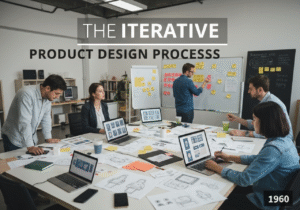



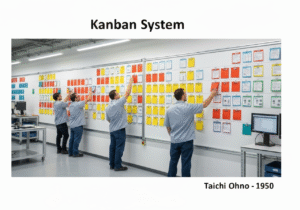


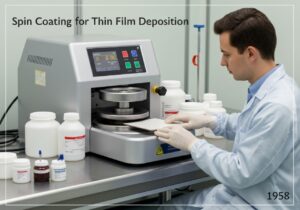

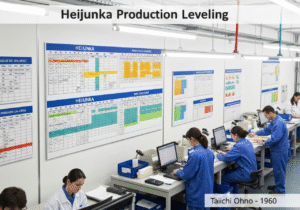
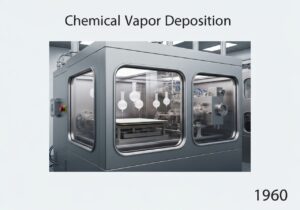











a well-structured technology roadmap benefits from stakeholder engagement
Regular check-ins can ensure the roadmap remains aligned with evolving business goals and adapts to any unforeseen challenges or opportunities.
good job highlighting the importance of tech roadmaps!
Anyone else think that the definition for a tech roadmap could have been more detailed here?
Interesting read! But arent there any cons to using a technology roadmap in product development? It all seems too perfect.
Absolutely, theres no magic bullet in product development, even tech roadmaps have their pitfalls.